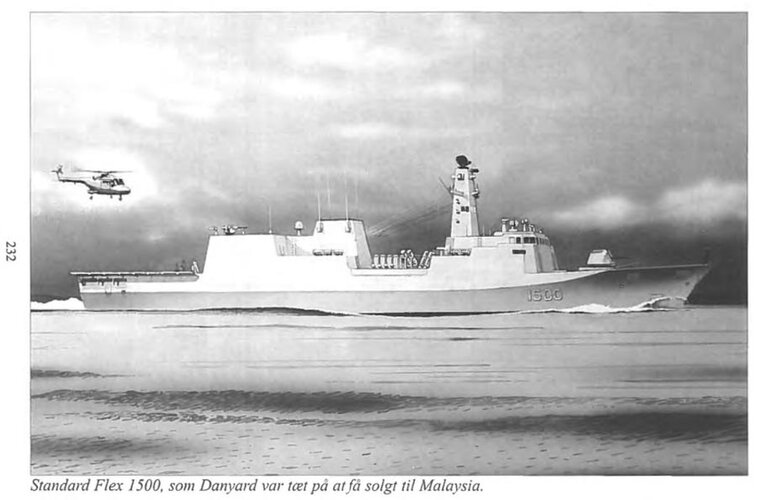Maybe. The mines and sonar don't converge to a point, so they might just be permanent installations, like I'm guessing the boat (or boats) alongside the funnel is (are).
I don't think there are two modules side by side amidships. The beam is 10m, two would be 6 or 7 (depending on orientation) meters wide, which seems like it would interfere with fore and aft movement too much.
If the minelaying capability, sonar, and boat(s) are permanent, then that would count as two or three, plus the five (or six) would be seven to nine depending, add the hangar and heavier sensors and that might explain why there aren't 10-12 modules.
Although I'm not sure there is a hangar, rather than just helicopter handling facilities like on the Knud Rasmussen-class, which are shorter, beamier, and heavier. The text in the bottom paragraph implies that the SF-3000 class is a fightier Thetis and says it has a hangar, which would make sense since it's based on the Thetis and they have hangars.
Incidentally, this series of ships starting with the Flyvefiskens are my favorites for frigates and patrol ships of any navy over the last 30 years. I also think the potential of the stanflex modules was never really realized. For example, you could easily fit 4 or possibley even 6* NLOS-LS containers, each of which would have 15 tubes for small missiles. In addition to the planned LAM and PAM, ADATS and Barak1 would fit the tubes, though they would need a slightly taller container and would stick up a bit from the top of the stanflex module. CAMM would fit the width, but would add over a meter to the height of the container.
*Four with 15 x 100kg missiles would weigh about as much as 8 harpoons. Six would barely fit, you would have three 1.1 meter square containers along the 3.5m edge, which would leave 80cm of clearance between the containers along the 3m edge, which would be really cramped for servicing the containers. Four would leave a 130cm gap between containers along the 3.5m edge, which isn't as claustrophobic a work environment.




